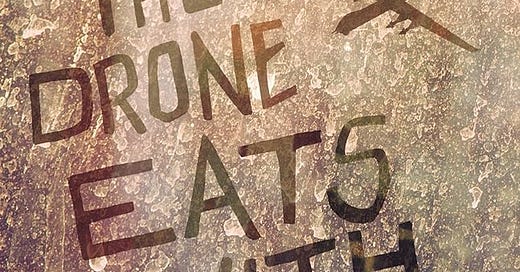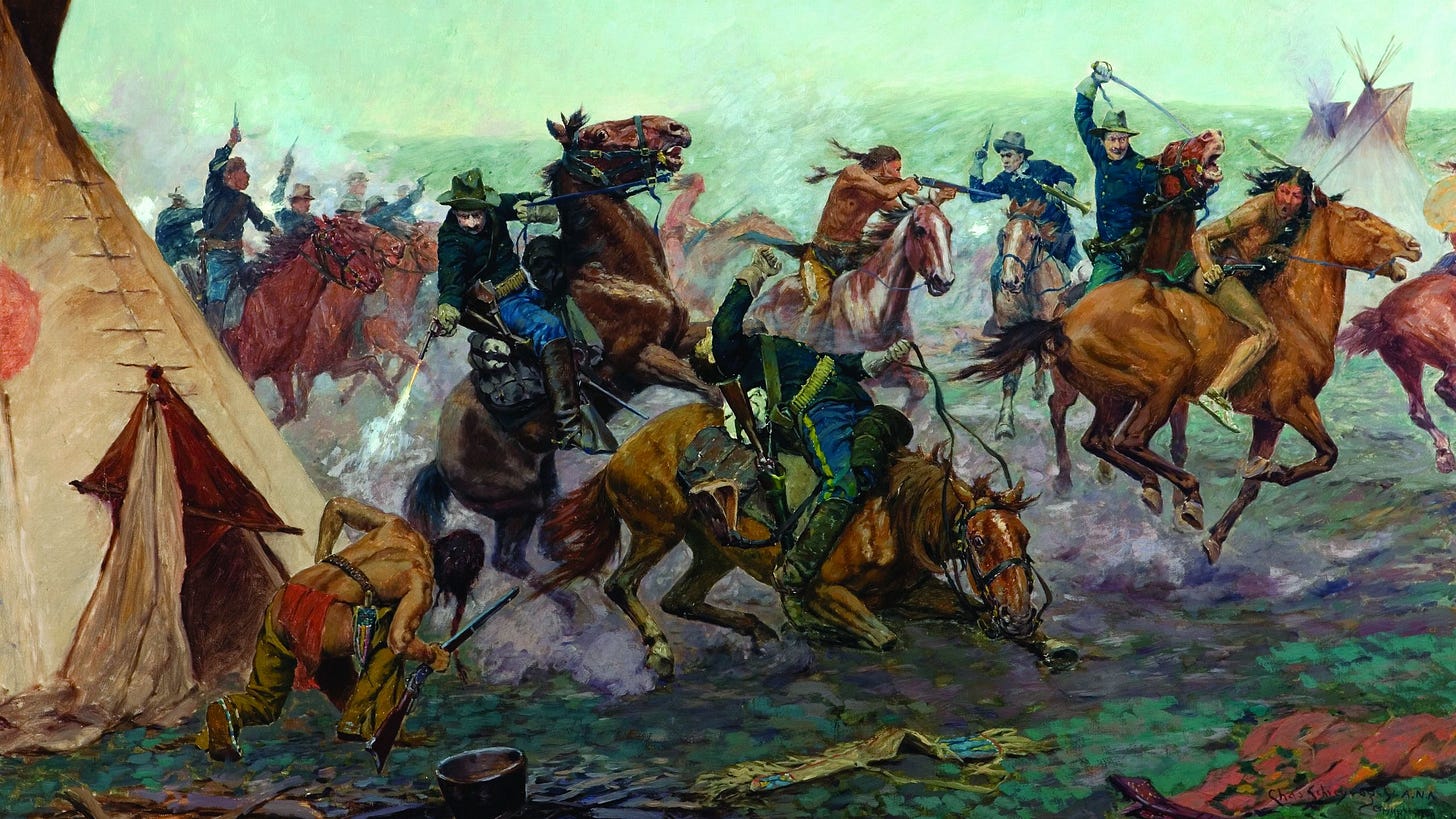I’ve been reading The Drone Eats With Me, by the Palestinian writer Atef Abu Saif. It’s a searing firsthand account of the 2014 Israel-Gaza war that Israel called ‘Operation Protective Edge’, which records in powerful, vivid, and often heartbreaking writing, a campaign that was horrific enough at the time, but seems almost like a skirmish in comparison with what is taking place now.
Not only does it provide a Palestinian perspective that is too often absent from media coverage of Israel’s wars with the Palestinians, but it’s also a reminder that Gaza is a society, not a terrorist enclave or ‘nest’.
This is the society that was attacked in 2014, and is being attacked now. And The Drone Eats With Me is a very human portrayal of Gaza under the bombs and before the bombs. In this world where death can strike anyone at random, there are also picnics on the beach; children’s birthday parties; internet cafes; Ramadan feasts, picnics, and sweet-sellers; kids with Playstations; cafes where men meet to watch the World Cup or talk politics; universities, schools and classrooms where students, learn, study, and read books; neighbourhoods, communities, and families who know the names of their neighbours annihilated by a drone strike, or the name of the little girl literally blown to nothing by a missile that hit her directly.
Such things should not be a surprise, but in a western world that too often looks at Gaza entirely through Israeli eyes, they tend to be eclipsed by the mere evocation of the word ‘Hamas’, and by dehumanising stereotypes that reduce an entire society to ‘terror enclaves’ and the sum of its armed groups.
Israel has been doing this for a long time, and what we are seeing now is the consequence of that. So I really recommend you read Abu Saif’s fine, moving book as an antidote to this toxic reductionist propaganda, at a time when we are all being forced to watch the annihilation of an entire society in real time.
And this dehumanisation is not exclusive to the Palestinians. Israel’s military modus operandi, and the propaganda that accompanies it, belongs to a long tradition of European colonial violence, in which mostly non-white peoples are depicted as barbarians, savages, and inhuman others who can be killed and humiliated with impunity.
Looking back at some of the pieces I wrote during Operation Protective Edge on my old Wordpress blog, I found the following post about the continuity between America’s wars against the Plains Indians and Israel’s high-tech military onslaught. It was written in August 2014, but much of what it describes could have been written about the terrifying slaughter which is now unfolding in front of our eyes. The difference is one of scale and intensity. In 2014, Israel attacked Gazan society. Now, with the support of the US, the UK, and the European Union, it seems intent on destroying everything that holds that society together.
Sheridan in Gaza
Despite the growing media criticism of Israel during the Gaza ‘conflict,’ there is still a general reluctance amongst mainstream journalists to acknowledge or analyse the broader strategic logic of Israeli violence. Too often, journalists accept the dominant Israeli narrative that its actions in Gaza are entirely directed towards stopping the rockets and exchanging ‘quiet for quiet’.
Even when Israeli strikes go well beyond what Israel calls ‘terror targets’, journalists bend over backwards to present such actions as tragic aberrations or accidents, and limit their criticisms to the question of whether or not they are ‘proportionate’ to the central task of defending Israel and stopping Hamas from firing rockets and shutting down Gaza’s ‘terror tunnels’.
Journalists like Jon Snow might criticize specific Israeli attacks on schools and hospitals, but time and again, Israeli spokesmen are allowed to bring the conversation back to the subject of Hamas rockets, and whether or not Hamas is using human shields, and the difficulties in waging war against ‘terrorists’ in densely-populated areas, etc, etc. These questions are certainly worth asking, but the idea that Israel has attacked Gaza’s fishermen, wheatmills, power and sewage plants, hospitals, mosques and schools simply in order to protect itself from Palestinian rockets is not really credible.
So why is Israel attacking these targets?
On one hand Operation Protective Edge is the latest manifestation of a tradition that is deeply-embedded in Israeli military practice, of massive retaliation in response to any acts of violence directed against Israeli soldiers or the Israeli population. This response is invariably aimed not just at the armed combatants responsible but at the populations that support or merely tolerate their presence.
In recent years this strategy has sometimes become known in Israeli military circles as the ‘Dahiya doctrine’, after the Hezbollah stronghold of Dahiya in Beirut which was leveled by Israel during the 2006 Lebanon War. But it has been practiced in one form or another ever since Palestinian fedayeen began carrying out cross-border attacks against Israel in the mid-sixties.
Israel’s strategy of retaliation is based on a crude and to some extent counterintuitive assumption: bomb and hurt civilians enough and they will turn their anger not against Israel but against the armed groups in their midst. The fact that this strategy has rarely succeeded hasn’t stopped Israel from trying it again and again, and the war in Gaza is one more attempt.
But as Greg Shupak points out in a fine piece for Jacobin magazine, Israel’s assault on Gaza cannot simply be explained by the Israel strategy of ‘counterinsurgency’ through terror and collective punishment. Shupak argues that its targeting of Palestinian infrastructure, agriculture, cultural and religious institutions is ultimately intended to make it impossible for Palestinian society in Gaza to sustain itself, and that such violence is intrinsic to the Zionist project and peculiar to settler-colonial societies.
Shupak’s suggestion that Gaza belongs to a tradition that includes the ‘clearing of the plains through the deliberate starvation of Aboriginal peoples’ in American and Canada is not something that you are likely to hear on Sky News or the BBC, but it is by no means outlandish. In the aftermath of the American Civil War, Union heroes General William Tecumseh Sherman and General Philip Sheridan were placed in charge of the US Army’s campaigns against the Plains Indians.
Sherman was famous for his scorched earth campaigns against Southern civilians during his army’s rampaging march through Georgia and the Carolinas, while Sheridan had overseen similarly destructive campaigns in response to Confederate ‘bushwhacker’ attacks in the Shenandoah Valley in Virginia. The essential premise of these campaigns was that civilians as well as soldiers were legitimate objects of war, and the Dahiya doctrine would not have shocked ‘ Little Phil’ Sheridan.
In 1870 Sheridan attended the Franco-Prussian War as an observer. Asked by Bismarck what Prussia should do in response to French guerrilla attacks on his troops, he reportedly replied:
The proper strategy consists in inflicting as telling blows as possible on the enemy’s army, and then in causing the inhabitants so much suffering that they must long for peace, and force the government to demand it. The people must be left with nothing but their eyes to weep with over the war.
This was not a theoretical formulation. Sheridan himself had used these methods against the Sioux, Comanche, Cheyenne and other Plains Tribes who obstructed white settlement and the completion of the transcontinental railroad in the aftermath of the Civil War. Between 1869 and 1883, Sheridan’s forces fought 619 separate engagements with the Plains Indians. Many of these battles took place in winter, when the US cavalry deliberately targeted the horses, food supplies and non-combatant populations of Indian tribes who refused to go to reservations, in order to starve them into submission.
In a letter to Sherman in 1873 Sheridan justified these methods in terms that many Israeli generals would find entirely familiar:
If a village is attacked and women and children killed, the responsibility is not with the soldiers but with the people whose crimes necessitated the attack. During the war did one hesitate to attack a village or town occupied by the enemy because women or children were within its limits? Did we cease to throw shells at Vicksburg or Atlanta because women or children were there?
Sheridan’s campaigns in the West were not simply intended to win wars and prevent attacks on settlers. He also attacked the material basis of Plains Indians society, by encouraging the hunting of buffalo herds by white hunters. Between 1872 and 1874 an estimated 3, 700,000 buffalo were slaughtered in the West, of which only 150,000 were killed by Indians. In 1875 Sheridan praised the hunters responsible, saying that they
have done more in the last two years, and will do more in the next years, to settle the vexed Indian question, than the entire regular army has done in the last thirty years. They are destroying the Indians’ commissary, and it is a well-known fact that an army losing its base of supplies is placed at a great disadvantage.
These efforts were carried out in accordance with official US government policy, which ordered the Plains Indians to assimilate or face extermination. Zionism has never extended such a ‘choice’ to the Palestinians whose lands it occupied and continues to colonize and absorb. Faced with a population whose existence has always been incompatible with the notion of a Jewish state, it first drove them out, then placed the new populations that it occupied in 1967 in ‘reservations’ in the West Bank and Gaza that were intended to render their inhabitants powerless and entirely subservient to and dependent on Israel.
The Palestinians have never accepted this outcome, and have continued to resist it almost continuously. Such resistance was one of the reasons why Ariel Sharon withdrew from Gaza in 2005, in the hope of handing over responsibility for policing the Gaza Strip to the Palestinian authority. When that plan was thwarted by Hamas, Israel imposed a new form of occupation by remote control, which transformed Gaza into something between a reservation, a prison, and a free fire zone, while using its military power to undermine any attempts by the Gazans to achieve an autonomous and self-sufficient society.
Now the Israeli government appears to have gone beyond its previous policy of keeping Gaza on the brink of collapse and periodically ‘mowing the lawn’, and adopted a policy aimed at the unmaking of Palestinian society in Gaza, through the destruction of all the essential instruments and institutions necessary for the long-term survival and autonomy of a modern society – and a Palestinian state.
That, not stopping rockets, is what Operation Protective Edge is all about. And someone really ought to ask Mark Regev about it next time they speak to him.








The use by the Israelis of an AI system to ‘select’ targets, with a deliberate intent to destroy Gaza infrastructure and terrorise the population, and with casual acceptance of mass casualties perfectly illustrates your points.
https://www.972mag.com/mass-assassination-factory-israel-calculated-bombing-gaza/
As you have explained, fighting terror with more terror does not tend to end well for either party. Unless the more powerful party sets out to near enough eliminate the weaker party. As in Sri Lanka with the Tamils or Burma with the Rohinga. But that appears to be Israel’s intent in both Gaza and the West Bank.